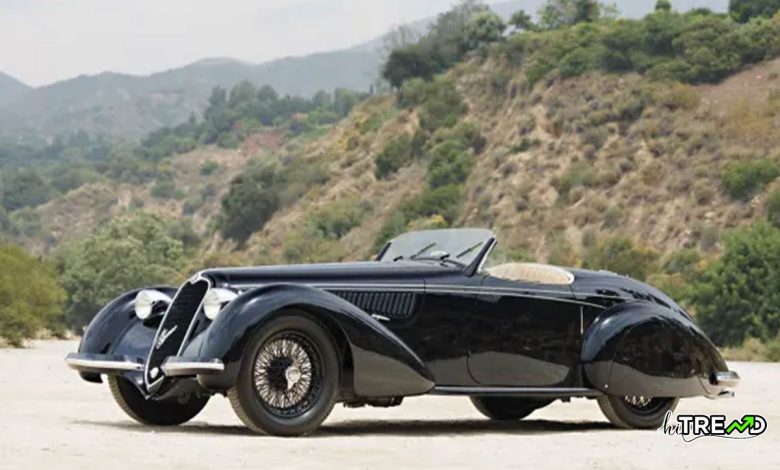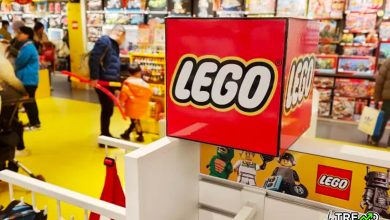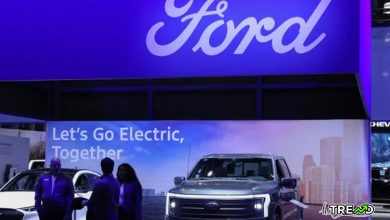Classic car sales stall in Monterey auctions as new generation takes charge

A version of this article first appeared in CNBC’s Inside Wealth newsletter with Robert Frank, a weekly guide to the high-net-worth investor and consumer. Sign up to receive future editions, straight to your inbox.Classic car sales stall in Monterey auctions as new generation takes charge
Auction sales during Monterey Car Week fell 3% from last year, as a shift from older to newer cars left a pileup of unsold classics from the 1950s and 1960s.
Total sales at this year’s five car auctioneers in Monterey — RM Sotheby’s, Broad Arrow, Gooding & Company, Mecum and Bonhams — fell to $391.6 million this year from $403 million in 2023, according to Hagerty, the classic-car insurance company. That followed a decline of 14% last year compared with the peak of 2022.
Of the 1,143 cars up for sale, only 821 sold — marking a 72% sell-through rate, according to Hagerty. The average sale price was $476,965, down slightly from last year’s average of $477,866.
Experts say wealthy collectors still have plenty of money to spend and are feeling confident given the recent rise in the stock market, but the types of cars they want are changing. There were simply too many similar cars at too many auctions to generate strong prices and sales.
“It’s saturation,” said Simon Kidston, the founder of Kidston and a leading advisor to wealthy car collectors. “When I walked around the auctions and saw so much similar ‘product,’ I asked myself if any of them had thought about what they or their rivals already had consigned, and if the cars were vying for the same buyers. Add to that the fact that many entries had already been in dealer windows for months or years which always feels like sloppy seconds.”Classic car sales stall in Monterey auctions as new generation takes charge
You can read more Business articles
At the same time, a new generation of collectors driving the market — mainly Gen Xers and millennials — prefer cars from the 1980s, 1990s and 2000s. The 1950s and 1960s classic cars that powered the market for decades and are popular with baby boomers are pouring onto the market and failing to find buyers.
The sell-through rate in Monterey (or the percentage of cars that actually sold on the auction block) was an anemic 52% for pre-1981 cars priced at $1 million or more, according to Hagerty. The sell-through rate for cars less than 4 years old was a much stronger 73% — proving that young collectors are now in the driver’s seat.
Hagerty’s Supercar Index of sports cars from the 1980s through the 2000s is up over 60% from 2019, while the Blue Chip Index of 1950s and 1960s Corvettes, Ferraris, Jaguars and other storied classics is down 3%.
Granted, a small number of rare, true masterpieces will still fetch high prices. The top car of the week was a 1960 Ferrari 250 GT SWB California Spider that sold at RM Sotheby’s for $17 million and the runner-up was a 1938 Alfa Romeo 8C 2900B Lungo Spider that’s one of only five in existence.
Yet the broader changing of the guard in classic cars, especially as many older collectors start selling off or downsizing their collections, is likely to weigh on prices for older cars for years.
“From an auction perspective, the market continues to take a breath while we transition from what was hot, think Enzo-era Ferraris, the so-called full classics as well as ’50s and ’60s sports racers, to the ascendant modern supercar class,” said McKeel Hagerty, CEO of Hagerty. “The divergence between older and newer cars has accelerated.”
Some say high interest rates are also putting pressure on the classic-car market. At the lower end of the market, many buyers had been using financing to buy cars and build their collections. At the high end, rising rates raised the opportunity cost of buying a classic car.
“People think, ‘Instead of that million-dollar car, I could be earning 5% maybe 10%’ if you’ve got a great manager,” Kidston said. “That, more than anything else, makes people think twice. A collector car is partially investment. There’s no other single reason for the increase in the value of collector cars over the last 40 years than the investment angle.”
Follow HiTrend on X




